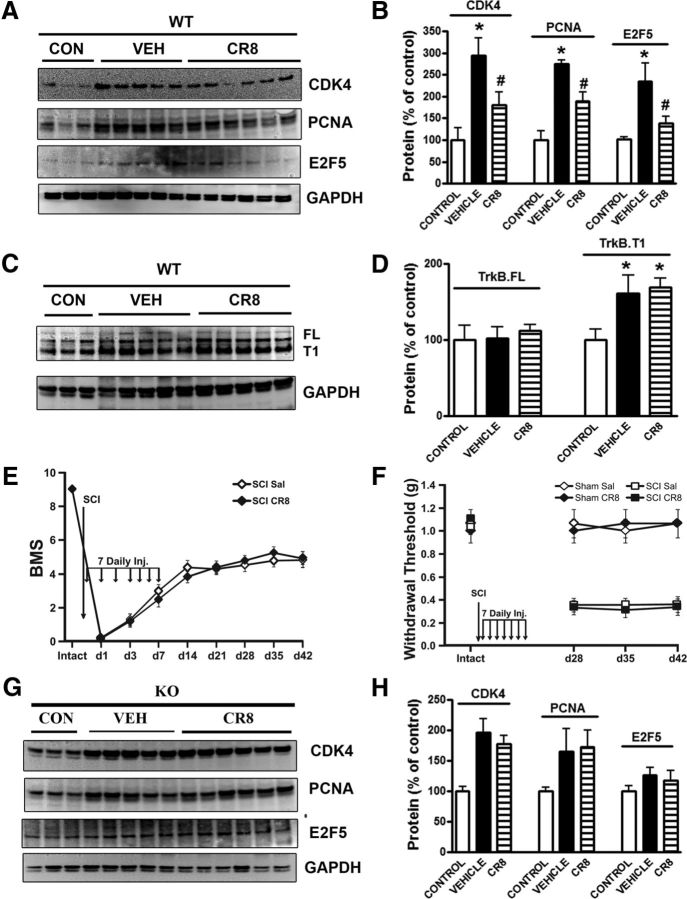Figure 9.
Cell cycle inhibition by CR8 has no effects on behavior and cell cycle activation in the trkB.T1−/− mice after SCI. A, CDK4, PCNA, and E2F5 expression were upregulated 8 weeks after injury in trkB.T1+/+ mice. B, CR8 treatment (n = 6) significantly attenuated SCI-induced protein upregulation compared with saline (n = 5; n = 3 control, n = 5 saline, n = 6 CR8). *p < 0.05, vehicle versus control; #p < 0.05, CR8 versus vehicle. C, Representative immunoblot showing increased trkB.T1 expression 8 weeks after SCI, with trkB.FL remaining unchanged. D, There was no difference in trkB.T1 expression between CR8-treated mice (n = 5) and saline-treated trkB.T1+/+ mice (n = 3). E, There was no difference in locomotor function between CR8-treated (n = 13) and saline-treated (n = 15) trkB.T1−/− mice after SCI. F, There was no difference in mechanical hyperesthesia between CR8-treated (n = 11) and saline-treated (n = 11) trkB.T1−/− mice after SCI. There was no CR8 effect on sham-SCI mice (n = 6/group). G–H, CDK4, PCNA, and E2F5 expression did not differ between CR8-treated (n = 6) and saline-treated (n = 5) trkB.T1−/− mice 8 weeks after SCI. Data are expressed as mean ± SEM.

